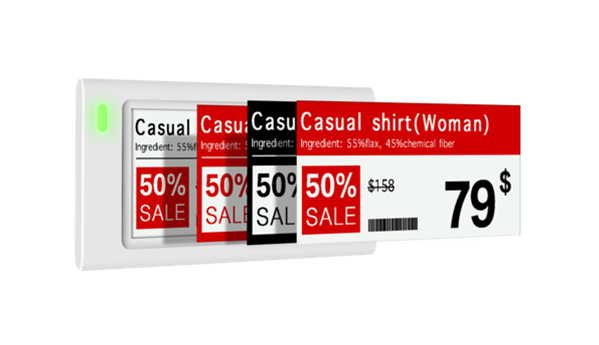Today, we’re diving into the exciting world of ESL installation to uncover the secrets behind this process. So, let’s roll up our sleeves and get ready to label!
Preparing for Installation – Setting the Stage: Before the installation process begins, careful planning and preparation are essential. Retailers need to determine the scope of the ESL deployment, identify the shelves and products that will be labelled, and gather the necessary equipment. It’s like mapping out the blueprint for a retail transformation!
Label Placement – Positioning for Success: To ensure maximum visibility and effectiveness, proper label placement is crucial. ESLs are typically attached to the front edge of store shelves, where they are easily visible to shoppers. Retailers need to consider the height and angle of the labels, ensuring they are within the line of sight and easily accessible for customers to read and interact with.
Label Attachment – Sticking Together: Now comes the fun part – attaching the labels to the shelves! ESLs often come with adhesive backing, allowing retailers to easily stick them onto the designated areas. The labels should be aligned and affixed securely to avoid any accidental removal or misalignment. It’s like giving the shelves a digital makeover!
Wireless Connection – Building the Network: ESLs rely on wireless connectivity to receive updates and information from the central pricing platform. As part of the installation process, retailers need to ensure that the labels are within the range of the wireless network. This ensures seamless communication and allows the labels to receive real-time pricing updates and other relevant data. It’s like connecting the dots in a digital retail ecosystem!
Integration with Pricing Platform – Syncing for Success: To unleash the full potential of ESLs, integration with the retailer’s pricing platform is necessary. This integration allows for centralized management, ensuring consistent pricing and information across all labels. Retailers can use the platform to customize pricing, update product details, and even run targeted promotions. It’s like giving the labels a direct line to the heart of retail operations!
Testing and Calibration – Ensuring Accuracy: Once the installation and integration are complete, it’s time to test the ESLs and calibrate them for optimal performance. Retailers should verify that the labels display accurate pricing and information, and that they are synchronized with the point-of-sale (POS) system. This ensures a seamless shopping experience and eliminates any discrepancies. It’s like fine-tuning the labels for precision!
Ongoing Maintenance – Keeping Labels in Top Shape: After installation, ESLs require regular maintenance to ensure their longevity and performance. This includes periodic checks to verify adhesive strength, battery life, and wireless connectivity. Retailers should also have a plan in place for replacing batteries and handling any technical issues that may arise. It’s like giving the labels some TLC to keep them shining!
The installation of Electronic Shelf Labels is a strategic process that involves careful planning, precise label placement, wireless connectivity, integration with pricing platforms, testing, and ongoing maintenance. By following these steps, retailers can enhance the shopping experience, streamline operations, and provide accurate and up-to-date information to customers.
#ElectronicShelfLabels #ESLs #FutureofRetail

